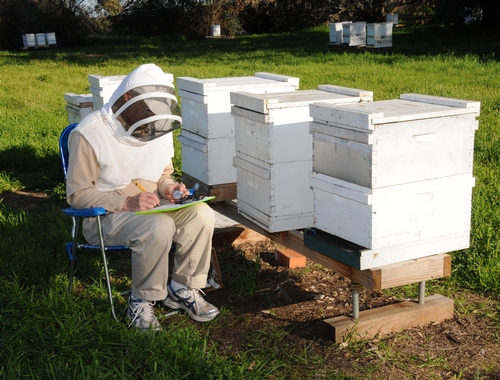Extension apiculturist Eric Mussen of the Department of Entomology, University of California, Davis, writes an interesting bimonthly newsletter.
He's been writing from the UC Apiaries since he joined the department's faculty in 1976.
Never missed an edition. Not one. And his newsletters are eagerly awaited.
His newsletters and Bee Briefs are available online for free downloading. Or, folks can subscribe for free.
In the current edition of from the UC Apiaries, Mussen explores an article in Catch the Buzz about statistics released by the Apiary Inspectors of America (AIA) that show startling winter bee losses.
AIA and the USDA honey bee lab in Beltsville, MD, reported on losses from data collected for 22.4% of the country's 2.46 million colonies, Mussen said.
"We lost about 33.8% of those managed colonies," he wrote. "Similar to previous surveys results, 28% of the beekeepers stated that they found some totally empty hives reminiscent of colony collapse disorder (CCD).
"Beekeepers reported the following reasons for colony losses: starvation, 32%; weather, 29%; fall weakness, 14%; mites, 12%; poor queens, 10%; and CCD, 5% (Yes, that is 102% of the losses)."
"What caught my eye was the 32% starvation. Beekeepers usually do a pretty good job of paying attention to how much food is stored in the hives, and it is difficult to believe that they would allow a third of their colonies to die of starvation.
"Normally, it is pretty easy to determine when a colony has starved. The food, especially honey, is all gone and there are dead bees stuck head-first in the empty cells in the combs. Even to the uninitiated, it is obvious that the bees ran out of food and died."
But why did they die? You'll want to read his comments.
Attached Images:

Research

Abandoned HIve